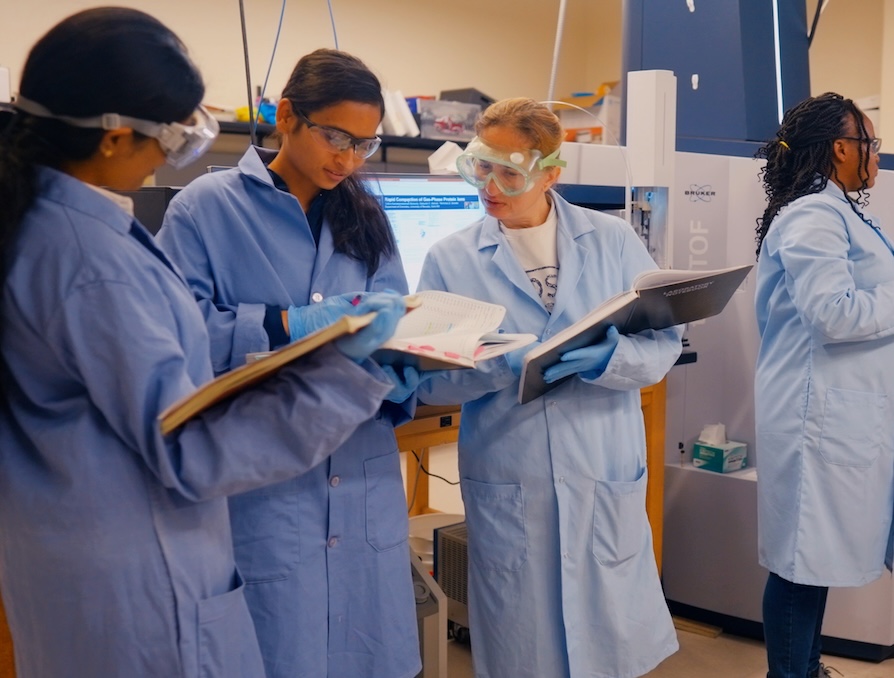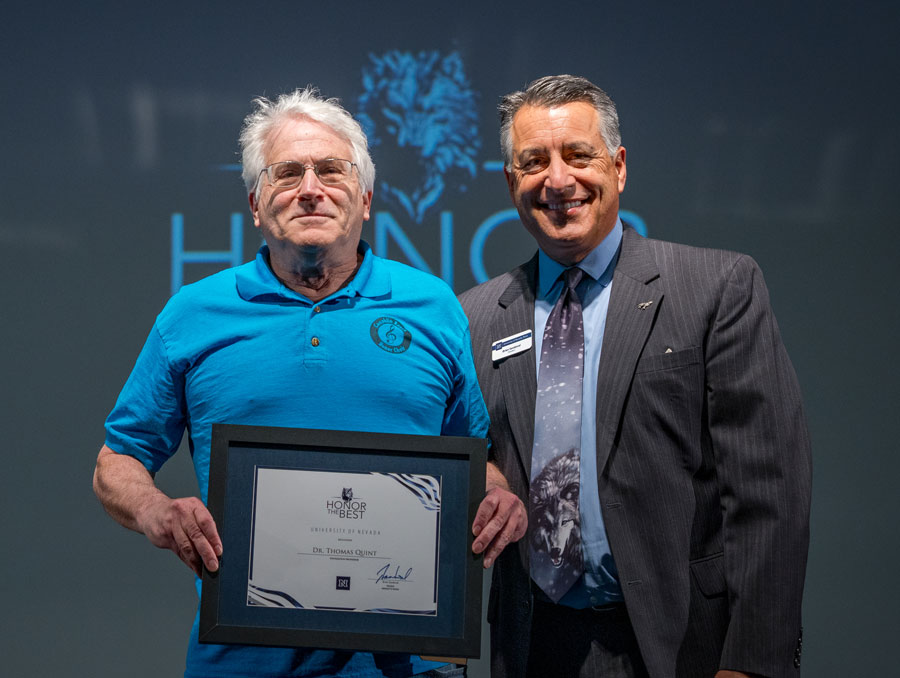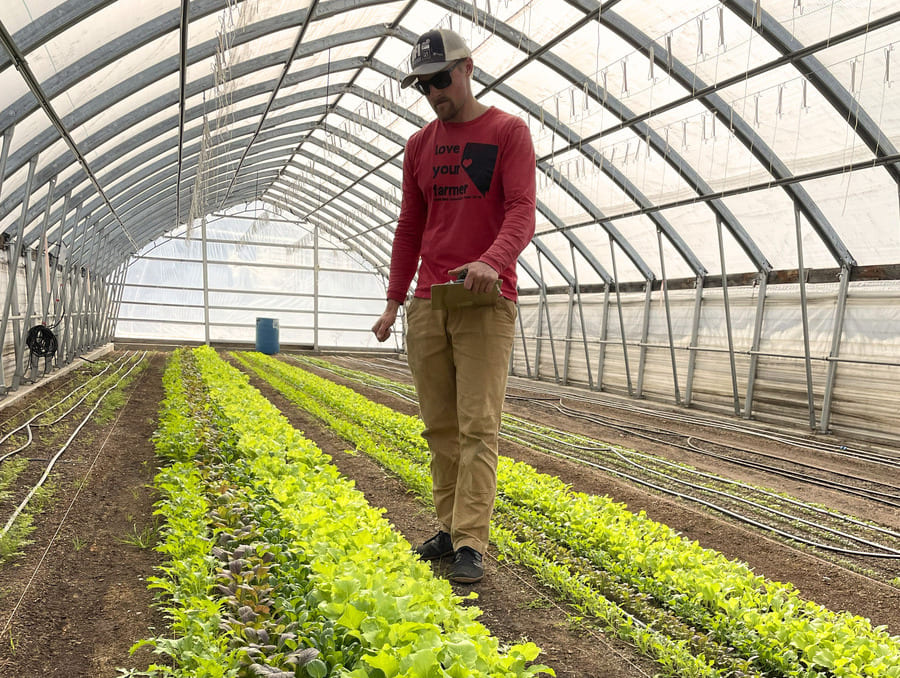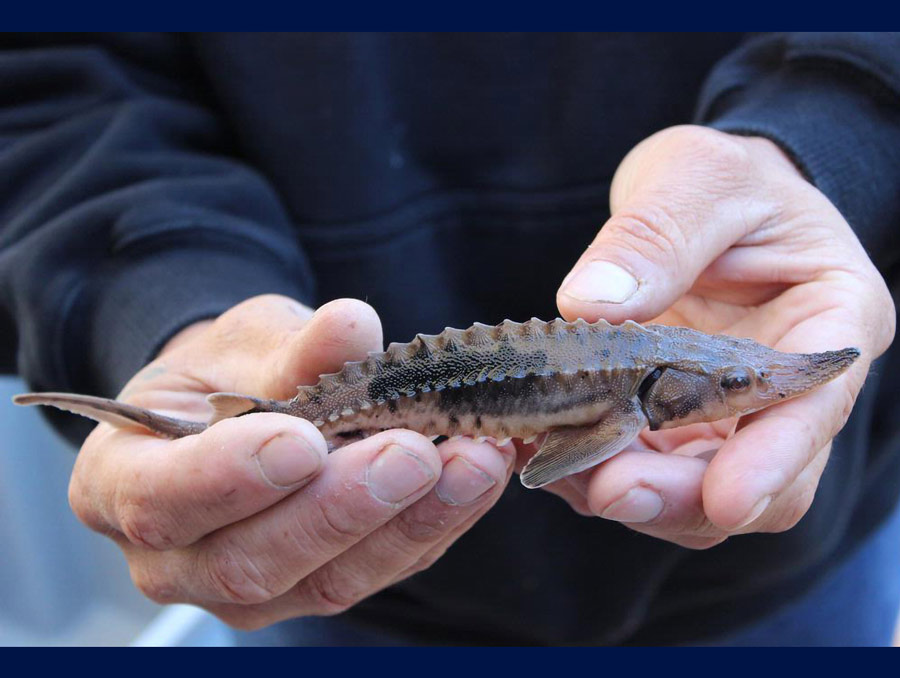In June, researchers in the College of Engineering’s Center for Civil Earthquake Engineering Research (CCEER) organized the 2001 PEER Pacific Rim Forum. Under the aegis of and with support from the Pacific Earthquake Engineering Research Center (PEER), the forum (“Regional-Scale Simulations of Earthquake Ground Motions and Infrastructure Response for Performance-Based Earthquake Engineering”) brought together 241 international participants and 41 international speakers to advance integrated earthquake engineering research through computer simulations at both the large and small scale. Participants ranged from current earthquake engineering students to leading international researchers in earthquake engineering and geotechnical engineering, as well as computer scientists from around the world.
“That is an important aspect of this workshop,” CCEER Director, Simon Wong Faculty Scholar, and Department of Civil & Environmental Engineering Professor David McCallen said in his opening remarks. “Our attendees include researchers, practitioners and students, and our presentations are at the nexus of earth science, engineering and computation. Through collaboration, we want to transition simulation technology into practice.”
In June, researchers in the College of Engineering’s Center for Civil Earthquake Engineering Research (CCEER) organized the 2001 PEER Pacific Rim Forum. Under the aegis of and with support from the Pacific Earthquake Research Center (PEER), the forum (“Regional-Scale Simulations of Earthquake Ground Motions and Infrastructure Response for Performance-Based Earthquake Engineering”) brought together 241 international participants and 41 international speakers to advance integrated earthquake engineering research through computer simulations at both the large and small scale. Participants ranged from current earthquake engineering students to leading international researchers in earthquake engineering and geotechnical engineering, as well as computer scientists from around the world.
“That is an important aspect of this workshop,” CCEER Director, Simon Wong Faculty Scholar, and Department of Civil & Environmental Engineering Professor David McCallen said in his opening remarks. “Our attendees include researchers, practitioners and students, and our presentations are at the nexus of earth science, engineering and computation. Through collaboration, we want to transition simulation technology into practice.”
Earthquake research: A multi-disciplinary pursuit
The scope of the forum can be understood through the lens of a looming threat to the San Francisco Bay Area, specifically an anticipated earthquake on the Hayward Fault. Roughly every 150 years, activity along the Hayward Fault results in a major seismic event, with its last large earthquake in 1868. In the intervening years, the Bay Area has seen its population flourish. Mitigating the damage to structures and the loss of life the next, imminent Hayward Fault earthquake may cause requires a multi-disciplinary understanding of seismic activities and their impact on the built environment. This is where the PEER forum—and the promise of advanced earthquake simulations for predicting regional-scale damage —comes in.
Earthquake engineers have a long history of testing structures and structural elements under earthquake conditions. By using “shake tables”—large platforms onto which scale structures are placed and which are pushed and pulled to simulate actual earthquake motions—they can test new materials and earthquake resistant designs before they go out into the real world. The platens of these shake tables have traditionally been made of metal, though, and as such, they do not fully replicate the real-world conditions where buildings and bridges rest on soil. Even this challenge is possible to overcome. With sponsorship from the Department of Energy and in collaboration with the Lawrence Berkeley National Laboratory in Berkeley, Calif., and the University of California, Davis, the Center for Civil Earthquake Engineering Research (CCEER) is in the final stages of developing a “soil box” earthquake engineering research system. Upon its completion, the soil box will hold 350 tons of soil and will facilitate research that investigates how new materials and structures respond during earthquake simulations when they are resting on soil, more faithfully replicating real-world conditions.
“A transformational tool”: Multi-scale computer modelling
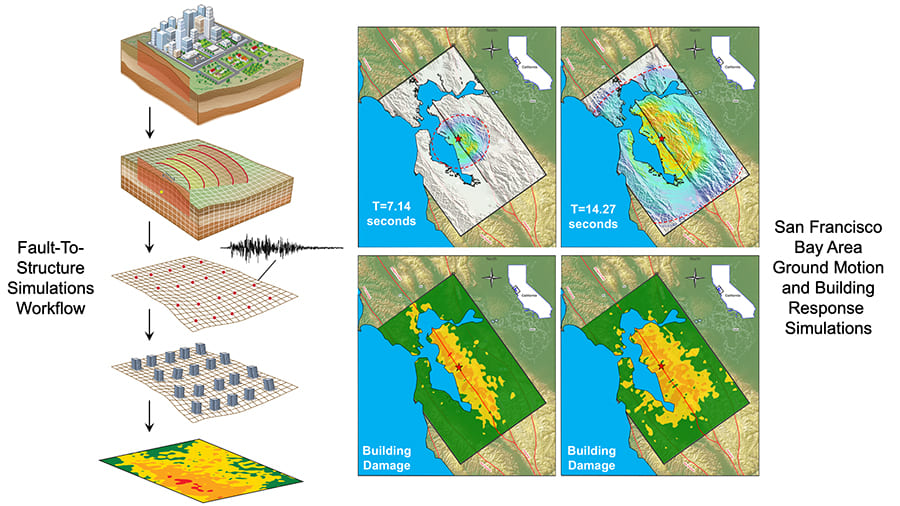
The soil box is vital to advancing earthquake engineering, but the researchers gathered at the June forum are united in their belief that the field is on the brink of a quantum leap forward. And the key is integrating traditional methods of research and information from multiple disciplines and historical data to inform high-performance computer models that can accurately portray what will happen when the next big earthquake hits. Put simply, the future of earthquake engineering research at regional scale lies in computer simulations because they have the potential to be extremely robust and cost-effective and provide new insight into how a specific fault rupture (e.g. the Hayward fault) can impact an entire region.
While the data gathered from a shake table—or even a soil box experiment—provides invaluable information that may save lives, each experiment can be costly. Setting up an experiment can take weeks or months, and the energy expended applying more than a million pounds of force is considerable
Firing up a computer to run a simulation, on the other hand, requires far fewer resources. By harnessing the ever-increasing power of computers to combine different data sets and produce new models, researchers believe they can supplement the physical shake labs with robust and accurate models of past and potential earthquakes the world over.
“A validated, realistic simulation capability would provide a transformational tool,” McCallen said. “It must be multi-disciplinary, couple linear and nonlinear systems, model uncertainties, and perform at multiple scales.”
In addition to modeling the movement of individual structures, such a tool would also have to model the ground beneath it for hundreds of kilometers to provide a true sense of what might happen when a rupture at a given fault line triggers an earthquake. By combining the expertise of researchers in an array of disciplines from around the world, the forum was an important step in the development of such a revolutionary tool. The first day of the forum described the technological underpinnings of the global undertaking, while the second day posited ways to transform research into practice.
“We are proud of the efforts of Drs. McCallen, Petrone, Seylabi and Elfass and the rest of the organizing committee to unite the world’s best researchers in the field to continue to push earthquake engineering forward,” College of Engineering Dean Manos Maragakis said. “Through the collaborative spirit of events like the PEER Pacific Rim Forum, they strive to find solutions to the world’s most challenging problems. We are grateful for the combined efforts of PEER, the Center for Earthquake Engineering Research and the researchers who came together for this important event.”
Experience the forum
For those who couldn’t attend the forum, PEER has created videos of each of the 48 presentation from the Pacific Rim Forum 2021 and made them available through its YouTube channel.
PEER Pacific Rim Forum 2021 Organizing Committee
David McCallen | Director of Center for Civil Engineering Earthquake Research, Simon Wong Faculty Scholar, and Professor in the Department of Civil and Environmental Engineering in the College of Engineering at the University of Nevada, Reno; Lawrence Berkeley National Laboratory
Floriana Petrone | Assistant Professor in the Department of Civil and Environmental Engineering in the College of Engineering at the University of Nevada, Reno; Lawrence Berkeley National Laboratory
Norman Abrahamson | Adjunct Professor University of California, Berkeley, member National Academy of Engineering
Arben Pitarka | Senior Scientist, Lawrence Livermore National Laboratory
Elnaz Seylabi | Assistant Professor in the Department of Civil and Environmental Engineering in the College of Engineering at the University of Nevada, Reno
Sherif Elfass | Research Associate Professor in the Department of Civil and Environmental Engineering in the College of Engineering at the University of Nevada, Reno
